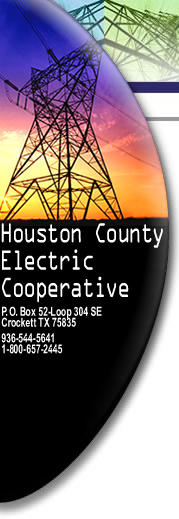

 |
||||
 |
Farmers and ranchers decided that if they were going to get the power they needed, they would have to take action themselves. They organized local cooperatives to provide local, consumer-owned electric service. The impact to rural quality life was electrifying, to be sure; it was even greater than anyone had dreamed. By 1940, 567 cooperatives across the nation were providing electricity to more than 1.5 million consumers in 46 states. (Today, 900 electric co-ops serve 31 million people in 46 states.) The nation's first electric cooperative was established in 1935, in Bartlett, Texas. Today, Bartlett EC is one of the 81 electric cooperatives --70 distribution co-ops and 11 generation transmission co-ops (G&Ts) -- that provide safe, reliable electric service at lowest possible cost to nearly 3 million member-consumers in Texas. Texas co-ops own more than 260,000 miles of lines serving more than 1.2 million meters in 244 of the state's 254 counties. In 1939 the Houston County Electric Cooperative was established providing service to Houston, Leon, Trinity, Anderson, Walker, Angelina, Cherokee, Madison, and Freestone county. Today over 13,000 members spanning over 17,000 meters receive power from the Houston County Electric Co-op. Electric cooperatives are different from other power providers. As cooperatives, they are tax-paying, non-profit businesses owned by the consumers they serve. Co-ops are mostly voluntary organizations, open to all persons who are able to use their services. They are also democratic; their members actively participate in setting policy and making decisions. |
 |
||